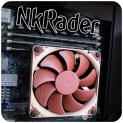That is exactly what i meant computurd, but my point was doing it for SINGLE DISK. To reach lower-cost consumer markets.
When you do it for arrays, it's called ASAP (Auto-tuning SSD Accelerated Pools of storage). These have been around for over a year now in Rack-mount, and Adaptec started for single-card sollutions this fall.
The problem with Adaptec's method is that they charge like $1000 for a 32GB x25-E for the read-cache, whitout doing anything other than adding a tag to the firmware to show it's their proprietary design. If they would allow using any MLC SSD, it would be a good value-proposition for consumers also, for the time being though, it's only feasable for high-end workstations and low-end servers.
I would consider using a 32GB Barefoot drive as read-cache for a RAID 5/6 from my Adaptec 5805 if it were possible, but i won't even consider buying a x25-E for 2-3x market price.
If you can implement this type of ASAP in a single drive, it would look like a self-tuning read-cache, and making it with a single NAND chip and making it work internally as i have described with read-access logging and filtering could boost average small block random IOPS by 5-10X for general usage.
EDIT: the term ASAP was coined by storagesearch.com. I just remembered an article they had this fall with a 5-year prediction of the storage market. I thought you would find it interresting, but didn't know where to post it, so i just pust it here:
http://www.storagesearch.com/5year-2009.html



 Reply With Quote
Reply With Quote









 ,
,  ,
, ,
,


Bookmarks